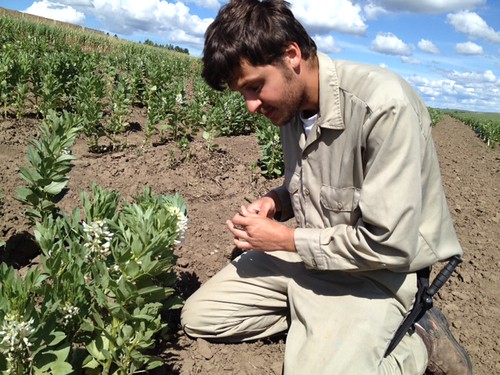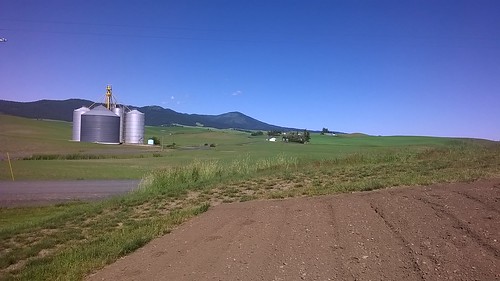
Christos Galanopoulos, a rising senior from Virginia State University (VSU), recently interned with ARS under the guidance of Jinguo Hu and Brian Irish at ARS’s Plant Germplasm Introduction and Testing Research Unit in Pullman, Washington. He conducted a range of projects directly related to his academic field of study, agriculture. Galanopoulos, along with fellow intern John Few, IV, participated as part of ARS’s partnership with VSU’s College of Agriculture.
Galanopoulos spent the first week working with Clare Coyne, a geneticist who curates the USDA cool season food legumes (pea, chickpea, lentil, etc.) collection. Coyne also collaborates with breeders to develop new varieties of legume crops offering disease resistance, higher yield, and other desired traits.
In addition to learning and applying greenhouse-management techniques, Galanopoulos assisted with setting up barriers to prevent cross-pollination of faba bean germplasm lines and collecting data describing the growth rate and differences between germplasm lines.
In the subsequent weeks of his internship, Galanopoulos worked with several other scientists.

Together with Barbara Hellier, Galanopoulos examined genetic diversity in the Pullman unit’s horticultural crops collection, which includes lettuce, sugar and table beets, rhubarb, garlic, leaks, and wild onion species. Frank Dugan demonstrated basic concepts of mycology and plant pathology, as well as how to prepare slides of fungal pathogens that attack garlic and other crops.
From Ted Kisha, Galanopoulos learned the fundamentals of managing, self-pollinating, analyzing and profiling field-grown bean plants, including kidney beans and snap beans.

Jinguo Hu, the Pullman unit’s research leader, was a key source of science-related information about ARS and showed Galanopoulos how to cross-pollinate faba beans.
Hu says such internships are win-win situations: Students gain valuable hands-on experience related to their field of study as well as confidence from performing the work. Scientists, in turn, appreciate the help and the chance to inspire a new generation of researchers to meet the food, fiber, fuel, and feed needs of a growing world population.
The USDA Agricultural Research Service’s (ARS) Office of Outreach, Diversity and Equal Opportunity (ODEO) provides opportunities for talented and diverse undergraduate students from across the country with an interest in agricultural research to participate in internships at ARS locations nationwide. It’s a unique opportunity for these young people to gain valuable, hands-on experience conducting research or carrying out other assignments under the guidance of an experienced scientist or mentor.
USDA has invested $19 billion in research and development since 2009, touching the lives of all Americans from farms to the kitchen table and from the air we breathe to the energy that powers our country. Learn more about the many ways USDA scientists are on the cutting edge, helping to protect, secure and improve our food, agricultural and natural resources systems in USDA’s Medium Chapter 11: Food and Ag Science Will Shape Our Future.
